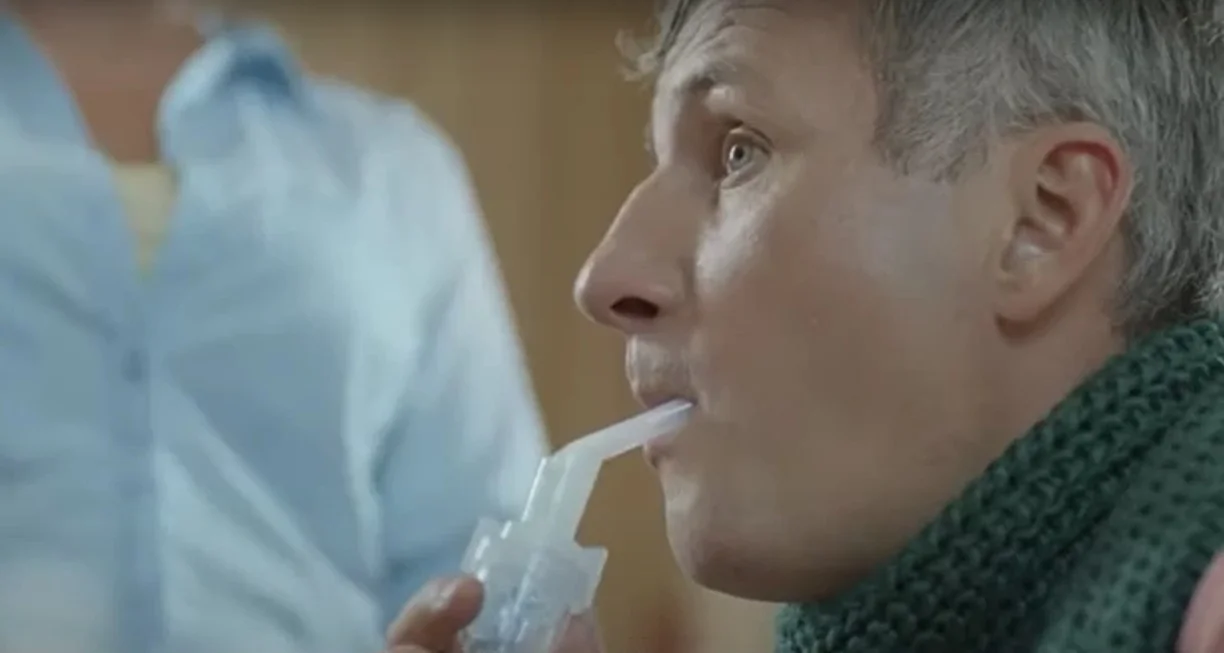Inhalation therapy

Inhalation therapy is the leading method of treating inflammation of the upper and lower respiratory tract. It is an introduction of drug particles in the form of aerosol into the body.
Main advantages
Transformation into aerosol increases the drugs activity. This happens due to the increase in the drug affected area, thereby covering a larger portion of the respiratory tract. Particles dissolved in the air:
- Penetrate the tissue faster.
- Have a charge that improves the uniform sedimentation of particles and has a positive effect on cells.
Unlike most medications, this is a resolution therapy during pregnancy and feeding. It can be used at any age and at any stage of the disease. Main advantages include:
- Painlessness.
- Targeted influence directly on the diseased organ.
- Low effect on other body tissues.
- Reducing the number of side effects of treatment.
Therapy can be carried out at home.
Varieties of aerosols
To create dispersed solutions the following agents can be used:
- Drugs.
- Normal saline.
- Plant extracts.
- Oils.
- Soda solutions.
- Mineral waters.
Depending on the size of the dispersed particles, all the obtained aerosols are divided into:
- Aerosols with very small particles from 0.5 to 5 microns. They are ideal for treatment of lung diseases. When inhaled they reach the alveoli.
- Medium-dispersed suspensions (5-25 microns). They have a therapeutic effect on the large bronchi and trachea.
- Aerosols with low dispersion (25-100 microns). They can help in treatment of trachea, nasopharynx and oropharynx.
- Small drops (100-250 microns). They affect only the nasal cavity and oropharynx.
Steam inhalers make aerosols with large diameter particles. They are not suitable for treatment of diseases of the bronchi, trachea and lungs. Micronised and medium-dispersed suspensions can be obtained by means of a nebulizer operating on the basis of ultrasound, compression or mesh technologies. The speed of particles movement is also important. The higher it is, the deeper the active compound will penetrate.
Depending on the temperature of the incoming solution, all types of inhalation are divided into:
- Hot steam with temperature up to 60 degrees is used. Such inhalation increases blood circulation, relieves pain. They are suitable only for treatment of nasopharynx and pharynx.
- The carrier is heated to 40 degrees. Promotes good coughing and eases dry unproductive cough.
- Room temperature steam. It is suitable for administration of drugs, removal of sputum, inflammation, swelling.
What diseases can be cured
Most often, aerosols are used to treat respiratory diseases. They are suitable for treatment of both bacterial and viral infections. Among the main indications are the following:
- Pharyngitis.
- A.R.V.I.
- Angina.
- Laryngitis.
- Tracheitis.
- Bronchitis.
- Bronchiolitis.
- Pneumonia.
- COPD.
- Mucoviscidosis.
- Sinusitis.
- Rhinitis.
Inhalation will be effective in treatment of obstructive, prolonged diseases, asthma.
Groups of drugs used for inhalation
In addition to normal saline and mineral water, aimed to moisturize and soften the mucosa, they use a wide range of medicinal solutions in inhalers.
- Antiseptics – contribute to the destruction of fungi, viruses and bacteria.
- Sympathomimetics – activate adrenaline receptors, reducing stenosis (laryngospasm).
- Antibiotics – provoke the death of bacteria and relieve inflammation.
- Bronchial spasmolytics – contribute to the expansion of the lumen in the bronchi, which accelerates the excretion of sputum and removes obstruction.
- Hormonal compounds – reduce inflammation and swelling.
- Expectorant drugs – improve the expectoration of sputum.
- Anti-inflammatory.
If several medicinal compounds are prescribed at once, it is necessary to observe a certain sequence during inhalation. Bronchial spasmolytics must always go the first, expanding the respiratory tract. Then, 15-20 minutes later, use the substance that improves the expectoration of sputum. And after a complete cleaning of the pathways breathe with antibiotic or anti-inflammatory agent.
How to conduct nebulizer therapy
For therapy, prepare a solution of the drug. Some medications are sold in the form of ready-made nebulae, the contents of which can be just poured into the bowl of the inhaler, and some medicines must be pre-diluted with normal saline. For children make a solution in any case. The proportions are determined by age and differ for different drugs.
A nozzle is used to inhale dispersed particles.
- If you treat the nasal cavity, the inhalation is carried out through the nose and the exhalation through the mouth. Breathe calmly, slowly.
- To affect the alveoli and bronchial tubes use an oral method. Moreover, after inhalation, make a small breath delay for better settling of the particles and then slowly exhale.
In both cases, a mask must be used. In treatment of trachea and bronchi, it is preferable to breathe through the mouthpiece.
The duration of one inhalation is 10 minutes. Two to six sessions are allowed per day, depending on the medication. The treatment course is 5-20 inhalations. After the procedure, rinse your mouth with water. Try not to talk for twenty minutes. During one hour after inhalation it is not allowed to smoke, to eat, to irrigate the oral cavity with drugs, to rinse it and to go outside.
Mode of action and effectiveness
Inhalations act directly on the inflamed mucosa, glandular epithelial cells, capillaries and nerve terminals. Depending on the used solution the following things can happen:
- Anesthesia
- Reduction of swelling.
- Relaxation of unstriated muscles of the larynx, trachea and bronchi.
- Decrease in the discharge of histamines and cytokines.
- Increased activity of the epithelium cilia.
- Liquefying of sputum.
- Stimulation of regeneration processes.
- Improved blood circulation.
The use of inhalation therapy accelerates recovery and facilitates a patient’s condition.

